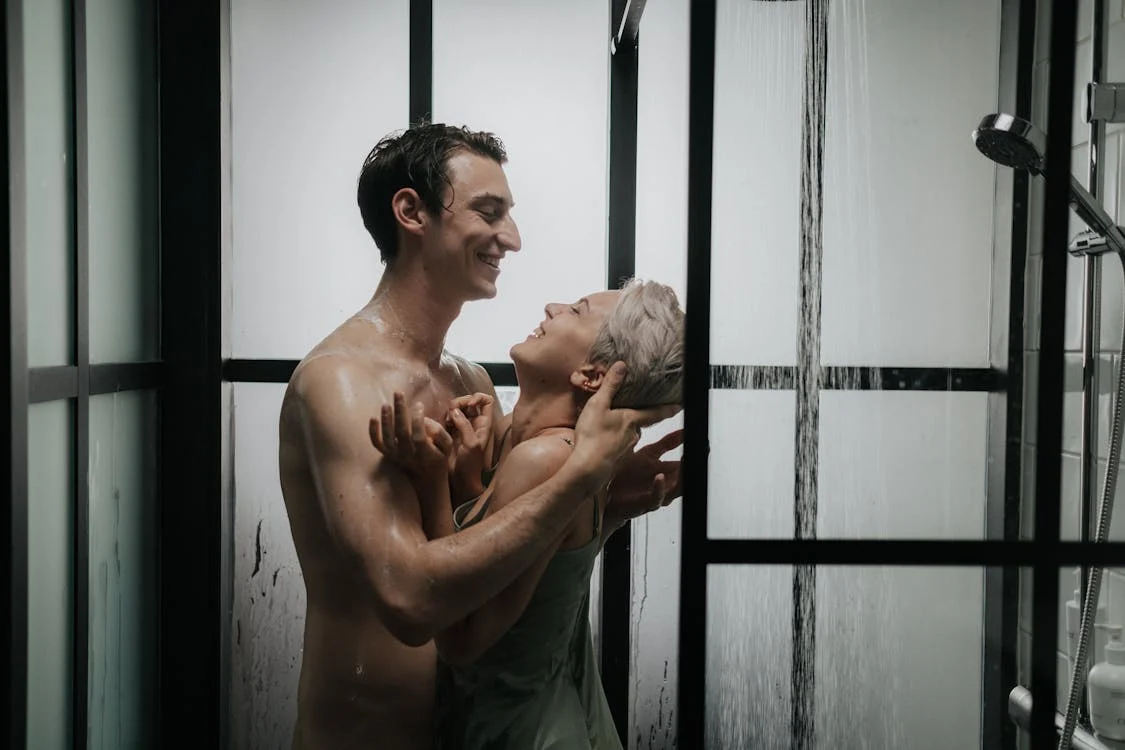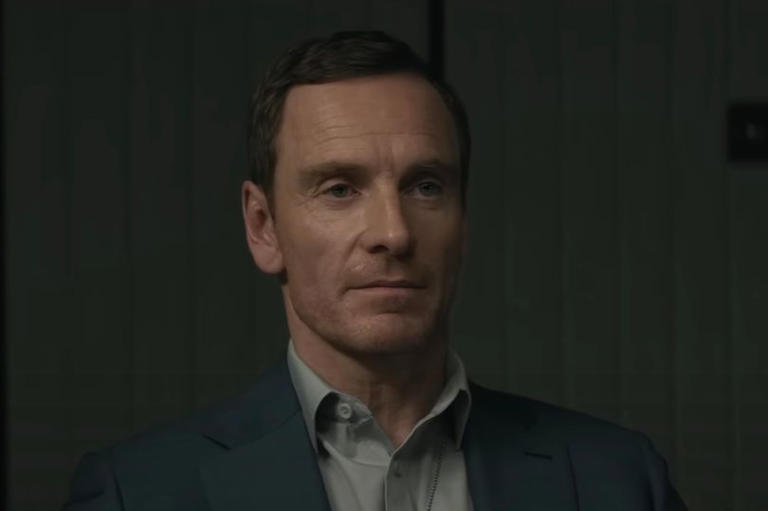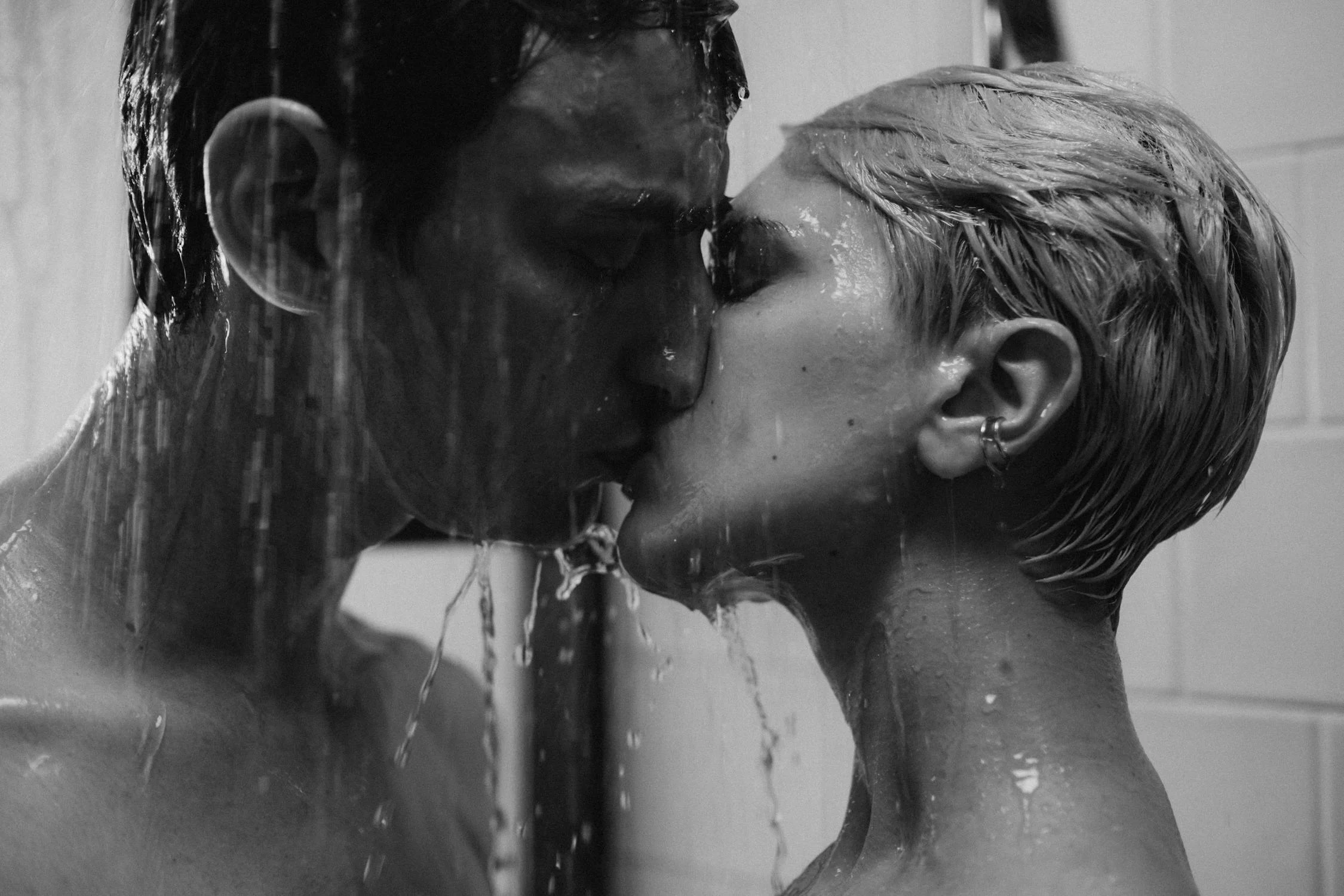Question:
What is a Modesty Pouch for Actors?
(By Carmichael Phillips)

RELATED TOPICS:
What do actors wear during love scenes?
What do actors do in love scenes?
Why do actors fall in love on set?
A modesty pouch, sometimes referred to as a “c—k sock” or “privacy pouch,” is a small, typically flesh-colored piece of fabric designed to cover an actor’s genitals during scenes where full nudity is not necessary or when it’s essential to preserve the actor’s comfort. These pouches come in various shapes, sizes, and materials, often made from soft fabrics with adhesive or elastic bands to hold them in place. They offer actors a layer of coverage, helping them feel less exposed while still achieving the artistic requirements of the scene.
Why Are Modesty Pouches Used?
 (Photo: Andrea Piacquadio | Pexels)
(Photo: Andrea Piacquadio | Pexels)
The entertainment industry prioritizes maintaining a respectful and professional environment on set, especially during scenes that require nudity or intimate contact. By using a modesty pouch, filmmakers can create a more comfortable space for actors, allowing them to focus on their performance without feeling overly exposed. Some of the main reasons modesty pouches are used include:
Preserving Dignity and Comfort: Actors may feel more comfortable knowing they are not completely nude. This layer of modesty can make a significant difference, particularly in scenes that involve close physical contact.
Reducing Distraction on Set: Modesty pouches also help reduce potential distractions for other cast and crew members, contributing to a more focused and professional working environment.
Ensuring a Smooth Editing Process: Sometimes, full nudity isn’t required for a scene. Using a modesty pouch allows filmmakers to achieve the look they need without revealing more than necessary, making the editing process easier if the footage needs to be cut or blurred later.
How Do Modesty Pouches Work?
 (Photo: Adrienn/Pexels)
(Photo: Adrienn/Pexels)
The modesty pouch typically fits snugly over the actor’s genitals, secured with adhesive or elastic. The pouches come in various designs to accommodate different types of costumes, body types, and levels of activity. Some are similar to a small sock or band, while others have more advanced designs for a seamless fit under specific clothing.
Adhesive Modesty Pouches: These have adhesive strips or patches that stick to the skin directly, providing a secure hold. The adhesive used is usually medical-grade to avoid skin irritation.
Elastic Modesty Pouches: Elastic bands can be used to secure the pouch around the waist, similar to a G-string. These offer an alternative for those sensitive to adhesive materials.
Custom-Fit Pouches: In some productions, pouches are custom-made for each actor to ensure a perfect fit and provide maximum comfort.
Other Tools for Actor Modesty

Alongside modesty pouches, there are other tools and garments that actors may use, depending on the nature of the scene:
Modesty Panels: These are fabric panels that can be placed between two actors during intimate scenes to maintain a physical barrier.
Nude-Color Bodysuits: For scenes where more coverage is needed, nude bodysuits allow actors to portray nudity without being fully exposed.
Pasties and Nipple Covers: Often used for female actors, these cover sensitive areas without affecting the overall appearance of nudity.
Examples of Actors Using Modesty Pouches:
Michael Fassbender – Shame (2011)

Fassbender performed full-frontal nudity in Shame, but in other projects he has reportedly used modesty pouches for more controlled scenes. In interviews, he’s been candid about how awkward and technical filming such scenes can be.
Chris Hemsworth – Thor: Love and Thunder (2022)

In the scene where Thor is shown naked (with his backside exposed), Hemsworth used a modesty pouch during filming. Director Taika Waititi and Hemsworth both joked about how strange the process was.
Henry Cavill – The Tudors (2007-2010)
Cavill had many intimate scenes in The Tudors and has openly talked about using modesty pouches during filming, sometimes humorously mentioning the awkwardness of it slipping off.
Kit Harington – Game of Thrones (2011-2019)
Harington has stated in interviews that he wore a modesty pouch during sex scenes. He admitted how technical and unglamorous those scenes are, despite how they appear on screen.
Dakota Johnson & Jamie Dornan – Fifty Shades of Grey (2015)
Both actors used modesty garments during the numerous intimate scenes in Fifty Shades. Dakota wore silicone coverings, and Jamie used a modesty pouch to keep things professional while filming explicit scenes.
Ryan Reynolds – Deadpool (2016)
Reynolds had a nude fight scene and confirmed that he wore a small pouch, humorously mentioning that it wasn’t the most flattering experience.
Margot Robbie – The Wolf of Wall Street (2013)

Margot used a “modesty patch” during her nude scenes. However, in some cases, she also opted out of certain coverings to keep the scene authentic, but typically actors are given the option to use them.
Jason Momoa – Game of Thrones (2011-2012)

Momoa famously used a “pink fluffy sock” as his modesty pouch during his intimate scenes with Emilia Clarke, something both actors laughed about later in interviews.
________________________________________
Fun Fact:
Modesty pouches come in different forms depending on the gender and the nature of the scene—ranging from flesh-colored briefs to tiny drawstring pouches. They’re part of the broader protocol of intimacy coordination that’s become more common in Hollywood to ensure actors’ comfort and consent during explicit scenes.
 (Photo: Andrea Piacquadio | Pexels)
(Photo: Andrea Piacquadio | Pexels)
In the world of film and television, actors are often asked to perform in scenes that require a level of nudity or simulated intimacy. While creating these scenes, filmmakers must balance the authenticity of the story with the personal comfort and privacy of the actors. This is where the modesty pouch—sometimes called a “modesty sock”—comes into play.
A modesty pouch is a small, flesh-colored pouch designed to cover an actor’s private areas during scenes involving nudity or partial nudity. It allows actors to maintain a degree of personal modesty while still fulfilling the artistic demands of the scene. Typically, it is made from soft, skin-toned materials like cotton, Lycra, or silicone and is designed to blend naturally with the skin under lighting.
Most modesty pouches are custom-fitted to the individual actor to ensure security and comfort. There are several common types:
Sock-style pouches: These are worn like a tight sleeve and sometimes tied or secured with adhesive.
Cup-style pouches: Designed more like a molded cup that attaches with skin-safe tape.
Thong-style garments: These may incorporate a thin strap that wraps around the waist or hips.
During filming, a wardrobe or intimacy coordinator typically assists in applying the pouch discreetly. Once in place, the modesty pouch protects the actor’s body from exposure while enabling realistic, uninterrupted filming.
Many well-known actors have spoken publicly about using modesty pouches on set. Some notable examples include:
Chris Hemsworth used a modesty pouch during scenes in Thor: Love and Thunder when portraying the Norse god’s bare-skinned moments.
Margot Robbie wore a modesty pouch during the famous “Wolf of Wall Street” bedroom scenes with Leonardo DiCaprio.
Michael Fassbender utilized a modesty pouch during the film Shame, where he portrayed a character struggling with sex addiction.
Each of these instances demonstrates how the modesty pouch serves to protect an actor’s personal dignity while still allowing them to commit fully to their roles.
Actors often report feeling vulnerable while filming intimate scenes. The modesty pouch offers several psychological and practical benefits:
Comfort and security: It provides a barrier that can reduce feelings of exposure.
Professionalism: It maintains professionalism on set, making it easier for everyone involved to focus on the work rather than the nudity.
Consent reinforcement: The use of a pouch supports an actor’s autonomy, ensuring that boundaries are respected throughout the filming process.
Without such precautions, actors could experience discomfort, embarrassment, or even trauma, which could impact their performance and well-being.
While the term “modesty pouch” is often used for men, women also have their equivalent coverings. These might include:
Modesty patches: Small adhesive patches that cover sensitive areas.
Seamless undergarments: Nude thongs or strapless underwear designed to be invisible under lighting.
Breast covers or “pasties”: Adhesive covers that maintain the illusion of nudity without full exposure.
Female actors also work closely with wardrobe and intimacy coordinators to ensure their garments are fitted correctly and offer sufficient coverage.
In recent years, the presence of intimacy coordinators on set has become standard practice, especially when filming scenes involving nudity. These professionals:
Ensure that all wardrobe solutions, including modesty pouches, are safe and comfortable.
Help choreograph intimate scenes to maintain boundaries.
Advocate for the actor’s consent and emotional well-being throughout filming.
Thanks to their involvement, the stigma and discomfort surrounding the use of modesty pouches have decreased considerably in Hollywood.
Despite their important role, modesty pouches can sometimes lead to awkward or amusing moments on set. Some actors have shared their experiences:
Henry Cavill mentioned during interviews for The Witcher that after long fight scenes, his modesty pouch would sometimes shift unexpectedly, causing laughter among the crew.
Jennifer Lawrence famously joked about her strategically placed modesty garments during the filming of Red Sparrow, commenting that they didn’t always stay in place during elaborate stunt scenes.
These stories remind us that even though modesty pouches serve a serious purpose, they can also bring a sense of humor and humanity to challenging filming situations.
It’s not just movies and TV that make use of modesty pouches. In live theater, especially in productions with simulated intimacy or quick costume changes, modesty garments are essential.
Performers in Broadway shows like Hair or The Full Monty use carefully constructed pouches or coverings that allow for complete freedom of movement without risking exposure in front of a live audience.
In theater, the challenge is even greater, as there’s no option for editing or reshooting a scene. Therefore, modesty garments must be both extremely secure and discreet.
At first glance, a modesty pouch might seem like a minor costume detail. However, it plays a crucial role in ensuring that actors feel respected, protected, and able to deliver their best performances without fear or discomfort.
As film, television, and theater continue to evolve, so does the sophistication and importance of tools like the modesty pouch. Thanks to thoughtful use of these garments, actors can push the boundaries of storytelling while maintaining their personal dignity—a win-win for both performers and audiences alike.
How to put on a modesty garment?
A step-by-step guide for actors, performers, and models
(By Jim Webb)

(Photo: Rodolfo Clix | Pexels)
Introduction: Why Modesty Garments Matter
In the world of film, television, modeling, and theater, modesty garments are essential tools that allow performers to maintain personal comfort and professionalism during scenes involving nudity or simulated intimacy. These specialized garments protect an actor’s privacy while still giving the illusion required for storytelling. Knowing how to properly apply and secure these garments is crucial — not only for comfort and security but for ensuring a seamless, believable performance.
Step 1: Choose the Right Type of Modesty Garment
Before applying anything, it’s important to choose the right garment for the scene’s needs. Different situations call for different types:
Adhesive bras or petals for topless scenes involving women
Flesh-colored thongs or pouches for men
Full silicone coverage pieces for underwater or shower scenes
Adhesive patches or “modesty strips” for minimal coverage
For example, in shows like Outlander, silicone modesty patches are often used due to the frequent presence of water and intense physical scenes.
Step 2: Prepare the Skin
Before applying a modesty garment, preparing the skin properly is essential for maximum adhesion and comfort:
Clean the area: Gently wash with soap and water to remove oils and dirt.
Dry completely: Any moisture can weaken adhesives.
Avoid lotions or oils: They can cause the garment to slip or not stick at all.
Sometimes, actors will lightly exfoliate the area beforehand to make sure adhesives bond securely.
Step 3: Apply Adhesive If Needed
Some modesty garments come with their own adhesive backing, while others require a separate skin-safe adhesive:
Medical-grade adhesive sprays or rolls are the most common.
Spirit gum is occasionally used but can irritate sensitive skin, so it’s less popular for delicate areas.
Silicone-based adhesives are preferred for waterproof scenes.
For example, in steamy shower scenes like those in True Detective, waterproof silicone adhesives are critical to keep modesty garments from shifting.
Step 4: Place the Garment Carefully
When applying the garment:
Start from one edge and gently press onto the skin, smoothing as you go.
Avoid wrinkles or air bubbles, which can cause discomfort or visible lines under the camera.
Use a mirror or assistance: Sometimes a costumer or wardrobe assistant helps, especially for hard-to-reach places.
For instance, actresses filming complex scenes, like Jennifer Lawrence in Red Sparrow, often had a professional costumer assist with placement to ensure security and discretion.
Step 5: Secure Edges and Double-Check
Once applied:
Press firmly around all edges to ensure a tight seal.
Reapply adhesive if any corner lifts.
Move around gently: A few simple movements can show if the garment stays secure during typical scene motions.
On large productions like Game of Thrones, multiple checks were routine before actors like Emilia Clarke and Kit Harington began filming, to prevent embarrassing malfunctions.
Common Mistakes to Avoid
Skipping skin prep: Leads to garments falling off.
Using too much adhesive: Causes a sticky mess that’s harder to clean later.
Not testing waterproofness: Critical for shower or pool scenes.
Rushing placement: Results in uncomfortable folds or shifts.
Even experienced actors can make mistakes. Sam Heughan once joked in interviews that early love scenes were full of “wardrobe surprises” due to improperly secured coverings!
Examples of Modesty Garments in Action
1. Alexandra Daddario in “True Detective”
Wore flesh-toned coverings and waterproof adhesives during intense shower scenes to maintain modesty without breaking realism.
2. Margot Robbie in “The Wolf of Wall Street”
Margot wore carefully placed modesty garments during her famously bold scenes — some so tiny they were barely larger than a postage stamp.
3. Michael Fassbender in “Shame”
While playing a character often in vulnerable states, Fassbender sometimes wore modesty pouches — though he was famously willing to go without depending on the scene’s needs.
How Long Can You Wear a Modesty Garment?
Most modesty garments are designed to last several hours during filming. However:
Adhesives may weaken with sweat or excessive movement.
Long shooting days (10+ hours) might require reapplication.
High-heat environments like bright studio lights can cause adhesives to melt slightly, requiring careful monitoring.
Typically, actors get a few quick breaks to adjust garments if necessary — another reason intimacy coordinators and supportive wardrobe teams are crucial.
Removing a Modesty Garment Safely
Removal must be handled delicately:
Use adhesive remover wipes: Gently dissolves the glue.
Peel slowly from the edges: Pulling too fast can irritate or damage the skin.
Moisturize afterward: Soothe the skin with gentle, fragrance-free lotion.
Actors are often given special aftercare products after scenes requiring extensive modesty coverage.
Special Cases: Underwater Scenes
Underwater scenes — such as those in movies like Aquaman starring Jason Momoa — present extra challenges:
Waterproof, suction-based silicone covers are critical.
Extra layers of adhesive may be used.
Secure testing underwater is done before rolling cameras.
Actors usually have standby wardrobe assistants nearby with backup garments ready in case the originals fail.
When Actors Decline Modesty Garments
In rare cases, actors choose to film scenes without modesty garments for the sake of realism or artistic integrity. When this happens:
Sets are “closed,” with minimal personnel.
Strict professionalism is observed.
Advance consent is heavily emphasized.
Examples include bold performances by actors like Leonardo DiCaprio (The Wolf of Wall Street) and Rooney Mara (The Girl with the Dragon Tattoo).
Intimacy Coordinators: A New Standard
The rise of intimacy coordinators has transformed how modesty garments are handled on set:
They advocate for the actor’s comfort and safety.
They assist in garment placement when needed.
They facilitate clear conversations about boundaries and expectations.
Thanks to this growing role, actors feel more empowered to request adjustments or express concerns during intimate filming.
Respect, Comfort, and Craftsmanship
Modesty garments are a critical part of filmmaking magic. They allow actors to perform confidently, respecting personal boundaries while achieving the visual realism audiences expect. Knowing how to properly choose, apply, secure, and remove these garments ensures not only a more comfortable experience for the performer but also a smoother production overall. As the entertainment industry continues to prioritize respect and safety, modesty garments will remain an essential tool both on and off the screen.
What do actors wear during shower scenes?
The surprising secrets behind filming those steamy moments
(By Jim Webb)
 (Photo: Cottonbro Studio | Pexels)
(Photo: Cottonbro Studio | Pexels)
When you watch a movie or TV show and see an actor stepping into a shower, it might feel like you’re witnessing a private, vulnerable moment. But behind the scenes, these scenes are carefully planned, choreographed, and, yes — actors are rarely actually nude. Filmmakers use clever wardrobe tricks and filming techniques to create the illusion of nudity while preserving the actor’s comfort and modesty.
What Do Actors Actually Wear?
During shower scenes, actors often wear special modesty garments. These are tiny, flesh-colored pieces of clothing designed to cover the most sensitive areas without being noticeable on camera. Some common items include:
Flesh-colored shorts for men
Strapless stick-on bras or “modesty patches” for women
Adhesive underwear, which sticks to the skin and is waterproof
In some cases, minimalistic thong-like coverings made from silicone or thin fabric are used. These garments are designed to stay hidden while still allowing the actor to move naturally under running water.
Use of Camera Angles and Steam
Beyond wardrobe, filmmakers rely heavily on strategic camera angles, props, and set design to maintain modesty. Scenes are often filmed with:
Steam machines to fog up glass surfaces
Close-ups of shoulders or faces rather than full-body shots
Cleverly placed shower curtains, frosted glass, or soap foam
This strategic filming helps maintain the illusion that the actor is completely exposed without actually requiring them to be.
Examples From Famous Shower Scenes
1. “Psycho” (1960) – Janet Leigh
In one of the most famous shower scenes ever filmed, Janet Leigh wasn’t truly naked. Director Alfred Hitchcock used clever editing and tight camera work, combined with strategic shadows and quick cuts, to create a terrifying scene that implied nudity without showing it.
2. “True Detective” (2014) – Alexandra Daddario
In her intense shower scene with Woody Harrelson, Alexandra Daddario wore modesty garments. Though the scene was provocative, extensive planning and professional etiquette kept things as comfortable as possible for the actress.
3. “American Pie” (1999) – Shannon Elizabeth
During a steamy scene involving a web camera, Shannon Elizabeth wore skin-colored coverings and was filmed from carefully selected angles. The scene feels risqué but was tightly controlled behind the scenes.
4. “Outlander” (TV Series)
Both Caitriona Balfe and Sam Heughan, who frequently appear in intimate scenes, have spoken about using “modesty patches” during their shower and love scenes. Often, extra steam and camera framing ensured a respectful portrayal.
Waterproof Modesty Garments
Because shower scenes involve running water, costume designers have developed waterproof versions of modesty garments. Some features include:
Silicone covers that adhere tightly to skin even when wet
Fast-drying fabrics that don’t sag or become visible when soaked
Medical-grade adhesives that hold coverings in place without irritation
These innovations help actors feel secure even during prolonged shower scenes that require multiple takes.
Wardrobe Malfunctions: A Real Risk
Despite precautions, accidents do happen. Sometimes adhesives loosen, garments shift, or the water pressure can cause wardrobe malfunctions. To prepare for this, scenes are often rehearsed dry before filming with water.
In more sensitive cases, the set may be closed, meaning only absolutely necessary crew members are allowed on set during filming. This helps protect the actor’s privacy if anything goes wrong.
Body Doubles: An Alternative
Sometimes, actors choose to use a body double for shower scenes. Body doubles are professional performers hired specifically to stand in for the actor during nude or semi-nude scenes. The production team uses editing tricks, face masking, or specific angles to hide the fact that it’s not the main actor.
A few famous examples:
Emilia Clarke initially used a body double for certain scenes in Game of Thrones, although she later chose to perform some herself.
Lena Headey, also from Game of Thrones, used a body double for her famous “Walk of Shame” scene.
Mila Kunis used a double for parts of her scenes in Friends with Benefits.
How Sets Are Designed for Shower Scenes
The physical setup of a shower scene is often very different from a real bathroom. Some important points include:
Removable walls: So cameras can shoot from multiple angles.
Special drainage systems: To manage the large amounts of water used over multiple takes.
Fake tiles and floors: Lightweight and safe, allowing actors to move comfortably.
Sometimes, showers are oversized compared to real ones, allowing better lighting and camera positioning without crowding the actors.
Actor Experiences: What They Say
Actors often talk about the awkwardness of filming shower scenes:
Jennifer Lawrence mentioned that filming shower scenes for Red Sparrow was “not glamorous at all,” emphasizing how technical and unsexy the process felt.
Jake Gyllenhaal joked that modesty garments often feel “like wearing a Band-Aid,” pointing to how odd the experience can be.
Dakota Johnson, while filming Fifty Shades of Grey, said there were so many technical steps involved that it removed any real intimacy from the process.
These testimonies remind us that what looks spontaneous on-screen is usually anything but.
Contracts and Consent: Protecting Actors
Before filming intimate scenes, including shower scenes, actors typically sign nudity riders — legal agreements outlining exactly what will be shown, how it will be filmed, and what wardrobe will be used. These contracts:
Specify what parts of the body can be shown
Limit how long filming can take
Grant the actor approval over final edits, in some cases
This ensures that actors maintain control over their image and feel respected throughout the process.
The Rise of Intimacy Coordinators
In recent years, Hollywood has increasingly relied on intimacy coordinators. These professionals oversee the filming of sensitive scenes to ensure:
Actors’ boundaries are respected
Clear communication between directors and actors
Consent is ongoing and can be withdrawn at any point
Thanks to their presence, filming shower scenes — and other intimate moments — has become a safer and more respectful process.
Conclusion: More Magic Than Reality
The next time you watch a shower scene, you’ll know that it’s a mix of careful planning, wardrobe tricks, skilled camera work, and constant attention to actor comfort. What looks effortless and raw on screen is, in truth, a marvel of movie magic — designed not just to tell a story, but to protect the real people behind the characters.
 (Photo: Cottonbro Studio | Pexels)
(Photo: Cottonbro Studio | Pexels)
In the past, actors performing scenes involving nudity, simulated sex, or close physical contact often navigated these vulnerable moments without much guidance or support. This lack of structure sometimes led to discomfort, misunderstandings, and even exploitation.
Today, the presence of an intimacy coordinator has become an essential part of the filmmaking process. These professionals ensure that actors feel safe, respected, and empowered while portraying intimate scenes. Their work is critical to maintaining ethical standards and promoting emotionally honest performances.
An intimacy coordinator is a trained professional who choreographs and oversees scenes involving physical intimacy in movies, TV shows, and theater. Their primary responsibility is to:
Advocate for the actors’ physical and emotional safety.
Ensure clear communication between directors, actors, and crew.
Establish consent and boundaries for each intimate scene.
Choreograph physical interactions much like a fight coordinator would stage a combat scene.
In short, intimacy coordinators bridge the gap between creativity and consent, ensuring that storytelling remains powerful without compromising an actor’s personal dignity.
Although the concept of guided, consensual intimacy on screen is relatively new, the push for formal intimacy coordination gained momentum in the late 2010s, particularly after the #MeToo movement spotlighted abuses of power in the entertainment industry.
In 2017, HBO became one of the first major studios to require intimacy coordinators on all productions involving sex scenes, following concerns raised during the filming of The Deuce. Since then, studios across the world have embraced the practice, recognizing its value not only for safety but for enhancing the quality of performances.
The role of an intimacy coordinator is both detailed and delicate. Key responsibilities include:
Script Analysis: Reviewing the script to identify scenes that involve intimate contact or nudity.
Pre-Production Meetings: Consulting with directors, writers, and actors to establish boundaries and expectations before filming.
Consent Workshops: Holding consent-based rehearsals where actors agree upon each touch, move, and level of exposure.
Choreographing Action: Staging the physicality of intimate scenes precisely, much like a dance or stunt sequence.
On-Set Monitoring: Being present during filming to ensure that what was agreed upon is respected and to intervene if needed.
Several high-profile productions have benefited from the work of skilled intimacy coordinators:
Ita O’Brien, one of the pioneers in the field, worked on shows like Sex Education and Normal People, both praised for their sensitive and authentic portrayals of sex and relationships.
On The Deuce, Alicia Rodis helped redefine how HBO approached intimacy, ensuring all scenes were consensual, choreographed, and professionally handled.
In Bridgerton, intimacy coordinator Lizzy Talbot carefully designed intimate scenes that became some of the show’s most iconic moments, ensuring actors like Phoebe Dynevor and Regé-Jean Page felt protected and respected throughout the process.
Each of these examples highlights how intimacy coordinators enable more believable, powerful performances while safeguarding the actors involved.
Beyond choreographing scenes, intimacy coordinators rely on a few essential tools:
Modesty garments: Items like modesty pouches and patches help cover actors’ private areas discreetly.
Barriers: Sometimes small pads or cushions are used between bodies to maintain separation while preserving the illusion of closeness.
Clear Language: Coordinators use specific terminology to ensure all parties understand movements and boundaries without ambiguity.
Closed Sets: Limiting the number of people on set during intimate scenes to create a private, respectful environment.
These tools are crucial for creating an atmosphere where actors feel both artistically free and personally safe.
While the terms are sometimes used interchangeably, there’s a subtle difference:
An intimacy coordinator typically works in film and television, focusing on the logistical and consent-based aspects of intimate scenes.
An intimacy director usually works in live theater, where staging, rehearsals, and performances require ongoing adjustments in real time.
Both roles share the same foundation: safeguarding actor welfare while enabling truthful storytelling.
Despite the growing acceptance of intimacy coordination, challenges remain:
Resistance from Directors: Some filmmakers accustomed to older methods may resist the structured approach intimacy coordinators bring.
Actor Hesitation: Not all performers are initially comfortable discussing intimate boundaries so explicitly.
Budget Constraints: Smaller productions may struggle to afford an intimacy coordinator, even though the protection they offer is invaluable.
Still, the benefits of this role are increasingly recognized as essential rather than optional.
Having an intimacy coordinator on set doesn’t restrict creativity; it enhances it. When actors feel safe and supported, they’re free to focus on delivering authentic, compelling performances without fear or anxiety.
Shows like Normal People and Bridgerton have demonstrated that intimacy choreographed with care can lead to some of the most memorable, emotional moments on screen—moments that resonate with audiences precisely because they are rooted in trust and respect.
Becoming an intimacy coordinator requires specialized training. Many undergo programs that teach:
Consent-based communication techniques.
Choreography principles for safe physical movement.
Psychological first aid to support actors emotionally.
Legal knowledge regarding workplace safety and actor rights.
Organizations like Intimacy Directors and Coordinators (IDC) and Intimacy Professionals Association (IPA) offer certification and continued education to ensure practitioners are well-prepared.
The introduction of intimacy coordinators marks a fundamental shift in the entertainment industry—one that champions empathy, professionalism, and artistry all at once.
No longer do actors have to navigate sensitive scenes alone or in fear. With the help of trained coordinators, intimate storytelling can be powerful and profound, carried out with consent, dignity, and care.
As audiences become more attuned to the realities of on-screen work, the role of intimacy coordinators will only continue to grow, shaping a future where respect for performers is not just expected but celebrated.
Are Intimacy Coordinators Required for Kissing Scenes?
Understanding the Role of Intimacy Coordinators in Modern Filmmaking
(By Javier Guerra)
 (Photo: Rebrand Cities | Pexels)
(Photo: Rebrand Cities | Pexels)
The Rise of Intimacy Coordinators in Hollywood
In recent years, the entertainment industry has seen a surge in the use of intimacy coordinators—specialists tasked with ensuring that any scenes involving physical intimacy, such as kissing, hugging, or more explicit content, are performed safely, consensually, and respectfully. While intimacy coordinators first gained prominence in the wake of the #MeToo movement, their presence has quickly become an industry standard, offering critical protection to actors and establishing clear communication around sensitive scenes.
The movement gained momentum after HBO committed in 2018 to hiring intimacy coordinators for all of its shows that featured intimate scenes. Shows like The Deuce and Euphoria have publicly praised the role of these coordinators, emphasizing how vital they are to creating a safe set environment.
Are Intimacy Coordinators Legally Required?
Currently, intimacy coordinators are not legally mandated by U.S. federal or state law for any type of scene, including kissing. However, many production companies, studios, and actors’ unions strongly encourage or even require their use as part of their internal protocols and ethical guidelines.
Organizations like SAG-AFTRA (Screen Actors Guild‐American Federation of Television and Radio Artists) have established standards that advise productions to provide an intimacy coordinator for scenes involving simulated sex or nudity, but they also recommend them for anything involving close physical contact, such as kissing scenes.
Although it’s not illegal to film a kissing scene without an intimacy coordinator, not having one could lead to complaints, negative press, and even lawsuits if an actor feels they were pressured or mistreated.
Why Kissing Scenes Are Included
Some might assume that kissing scenes are too “mild” to require an intimacy coordinator, but the reality is quite the opposite. Kissing can be deeply personal, and when done on camera, it can expose actors to vulnerabilities.
Intimacy coordinators help set boundaries—discussing beforehand whether an actor is comfortable with things like open-mouth kissing, hand placement, and the number of takes. They also choreograph the movements like a dance, ensuring that each action is agreed upon and rehearsed.
A good example comes from Netflix’s Bridgerton, where even simple kissing scenes were carefully mapped out with an intimacy coordinator present to ensure that both partners were comfortable throughout filming.
Examples of Productions Using Intimacy Coordinators
Many modern TV shows and movies have publicly discussed their use of intimacy coordinators even for less graphic scenes. For example:
Normal People (2020): The Hulu adaptation made headlines for its respectful and transparent approach to shooting intimate scenes. The actors, Daisy Edgar-Jones and Paul Mescal, both praised the show’s intimacy coordinator, Ita O’Brien, for helping to choreograph even light kisses.
The White Lotus (2021): Even non-sexual scenes involving touch or nudity had the oversight of an intimacy coordinator to ensure that actors were not left vulnerable.
Sex Education (Netflix): Every scene involving romantic physicality, from kissing to more explicit content, was mapped out thoroughly under the guidance of an intimacy professional.
Actors have often commented on how the presence of a coordinator shifted their experience from feeling anxious to feeling empowered.
Arguments Against Mandatory Intimacy Coordinators
Despite their growing prevalence, not everyone agrees that intimacy coordinators should be mandatory, especially for kissing scenes. Some veteran actors argue that trust between director and cast should suffice, and that formalizing every moment could stifle spontaneity and authenticity.
Actor Sean Bean made headlines when he criticized the use of intimacy coordinators, suggesting that it can “spoil the spontaneity” of a scene. However, critics of this view point out that while spontaneity is important, so is ensuring that actors’ physical and emotional well-being comes first.
The debate continues, but the consensus is increasingly in favor of the added professionalism that intimacy coordinators bring to sets.
How Kissing Scenes Are Handled Without an Intimacy Coordinator
In productions that opt not to use an intimacy coordinator for a kissing scene, the responsibility often falls on the director and the actors to negotiate boundaries themselves. This can sometimes work well, especially when there’s a strong foundation of trust.
However, the absence of a third-party advocate can create power imbalances. An actor may feel pressured to agree to actions they’re uncomfortable with if they fear jeopardizing their role. That’s why more productions—even low-budget indie films—are choosing to budget for an intimacy professional whenever close contact is involved.
Without one, actors might have to:
Request closed sets themselves
Speak up individually about personal boundaries
Negotiate scene specifics on the fly
While possible, it leaves more room for miscommunication and discomfort.
What Actors Say About Kissing Scenes and Coordinators
Many actors have spoken out about how valuable intimacy coordinators are, even for kissing scenes.
Florence Pugh praised the use of coordinators in Little Women (2019), noting that the clarity they provided helped her focus on acting rather than worrying about physical boundaries.
Meanwhile, Sydney Sweeney from Euphoria mentioned in interviews that having a professional present during her intimate scenes—including simple kissing moments—was empowering, helping her to maintain agency over her body and performance.
Statements like these from respected actors help normalize the idea that all physical intimacy, no matter how “small,” deserves thoughtful planning.
Conclusion: The New Normal
While intimacy coordinators are not yet legally required for kissing scenes, they are quickly becoming a standard best practice across Hollywood and beyond. They provide a clear framework for consent, creative collaboration, and professionalism that benefits both the actors and the production as a whole.
In an industry historically fraught with blurred lines and power dynamics, the use of intimacy coordinators—even for something as seemingly simple as a kiss—represents a significant shift toward respect, safety, and transparency. Productions that embrace this change are not only protecting their actors but also producing more thoughtful and ethically made art.
Are Intimate Scenes Awkward for Actors?
Exploring the challenges and behind-the-scenes dynamics of filming intimate moments in film and television.
(By Javier Guerra)
 (
(
Photo: Andrea Piacquadio | Pexels)
What Makes Intimate Scenes Different from Other Scenes?
Intimate scenes in movies and television shows have a unique place in film production. These scenes often demand a high level of vulnerability and trust from the actors involved. Unlike most other scenes, intimate moments require careful choreography and clear boundaries to ensure that everyone feels safe and respected. It’s not uncommon for actors to report feelings of awkwardness, but these moments are also highly professionalized within the industry.
For instance, scenes involving physical closeness or nudity often require intimacy coordinators, who are professionals dedicated to helping actors navigate these challenging moments. Their role is to ensure that the scene is choreographed, safe, and respectful for everyone involved.
Actors Speak Out About Their Experiences
Many actors have shared their thoughts on filming intimate scenes, and their experiences often reveal that while these scenes may be awkward initially, they become part of the job once the boundaries are set.
Take Emilia Clarke’s experience in Game of Thrones, where she was required to film numerous intimate scenes. In interviews, Clarke has discussed how these scenes were initially intimidating. However, as the show progressed, she became more comfortable and began to trust the crew and her co-stars. In her words, the environment shifted from one of discomfort to a place where she could fully embrace the work without letting her insecurities get in the way.
Similarly, in the case of The Notebook, Ryan Gosling and Rachel McAdams had several intense romantic scenes. Gosling famously joked about the awkwardness of the situation, noting that the initial moments were uncomfortable, but they both worked hard to establish a professional relationship on set. According to Gosling, humor and mutual understanding helped ease the tension, making the scenes feel less intimidating.
The Role of Intimacy Coordinators in Modern Filmmaking
In the past, intimate scenes were often handled with little consideration for the actors’ emotional or physical comfort. However, the inclusion of intimacy coordinators has dramatically changed how these scenes are approached. Intimacy coordinators are responsible for ensuring that actors feel safe and respected during intimate scenes. They work closely with the director, actors, and crew to establish clear guidelines for what will be filmed and what the boundaries are.
One notable example is the production of Normal People, a show that deals with intense romantic moments between its characters. The intimacy coordinator on this set, Ita O’Brien, worked closely with the actors, Daisy Edgar-Jones and Paul Mescal, to ensure their comfort during intimate scenes. Both actors have spoken about how O’Brien’s guidance made them feel more at ease, allowing them to focus on their performances rather than their personal discomfort.
Can Awkwardness Lead to Better Performances?
While awkwardness can undoubtedly arise in intimate scenes, some actors argue that this discomfort can lead to a more genuine and authentic performance. When two people are asked to portray intimacy, there’s often a layer of vulnerability that can make the scene feel more real.
For example, in Blue Valentine, the raw, unfiltered performances from Michelle Williams and Ryan Gosling were a result of the actors not only performing intimate moments but also drawing on their personal discomfort to inform the scene’s emotional depth. Both actors have spoken about how they deliberately avoided rehearsing too much for these scenes to keep the tension fresh. This unpredictability can sometimes enhance the authenticity of the performance.
In contrast, actors like Nicole Kidman, who worked on films like Eyes Wide Shut, have also commented on how rehearsing and carefully planning intimate scenes can minimize awkwardness. Kidman explained that while the filming process might be physically intimate, the emotional connection must be built and nurtured beforehand, often through deep trust with the director and co-stars.
The Impact of the Industry’s Changing Culture
The conversation around the discomfort of intimate scenes has evolved over time. As the #MeToo movement has gained traction, more attention has been paid to the treatment of actors during these vulnerable moments. Filmmakers and actors alike are now more conscious of the power dynamics at play during intimate scenes. Consent, communication, and respect have become central to the filmmaking process, particularly in the context of sexual or highly intimate moments.
In Euphoria, a show that has gained notoriety for its bold and unflinching portrayal of intimate moments, the cast and crew have discussed how they’ve taken steps to ensure a safe environment on set. Zendaya, who plays the lead character Rue, has spoken about how intimacy coordinators played a vital role in helping the actors navigate some of the more explicit moments on the show. The way the industry approaches intimacy on screen has changed significantly, with a greater emphasis on protecting actors’ rights and maintaining a professional atmosphere.
Do All Actors Feel the Same About Intimate Scenes?
It’s important to note that not all actors experience the same level of discomfort when it comes to intimate scenes. Some actors thrive in these situations, finding that they can fully immerse themselves in the performance without being hindered by awkwardness. Others, however, may find these scenes particularly challenging, either due to their personal boundaries, cultural influences, or previous experiences.
For example, when filming The Fault in Our Stars, Shailene Woodley and Ansel Elgort discussed how they approached their intimate scenes with mutual respect and comfort. Both actors had an open conversation about their boundaries and ensured they were on the same page, which allowed them to focus entirely on their characters and the emotional depth of their relationship.
On the other hand, actors like Jennifer Lawrence, who filmed Red Sparrow, have discussed how they struggled with the physical demands of intimate scenes, especially when the scenes required nudity or uncomfortable positions. Lawrence, however, praised the director for ensuring a respectful atmosphere during the filming process and explained that much of the awkwardness was alleviated by having clear communication with everyone involved.
Why Do Some Intimate Scenes Feel Uncomfortable for Audiences?
While actors may experience some discomfort, audiences also sometimes find intimate scenes awkward. This discomfort may stem from the fact that intimate moments between characters are highly personal, and watching such moments unfold on screen can feel like an invasion of privacy. However, these scenes are often essential for developing a relationship between characters, and filmmakers must find a balance between realism and the audience’s comfort.
An example of this is The Notebook, where the passionate kiss between Ryan Gosling and Rachel McAdams is often cited as one of the most memorable moments in modern romantic films. The intensity of their chemistry on screen, paired with the emotional weight of the scene, resonates with viewers. However, what might appear as an intimate connection for the characters might still leave some viewers feeling awkward due to the rawness of the emotion conveyed.
The key here is that while these scenes may make both actors and viewers uncomfortable, the discomfort can often enhance the emotional stakes and create a more visceral experience for the audience.



